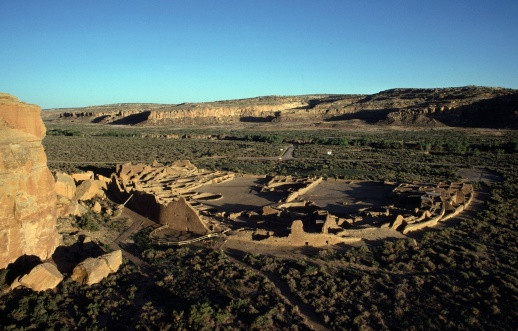Ancestral Pueblo civilisation at Chaco Canyon imported maize to sustain its huge population
The trade and cultural hub that was Chaco Canyon might not have been a good place to grow crops.
The ancient civilisation inhabiting Chaco Canyon in New Mexico may have imported maize to feed its very large population, a study has revealed. There might not have been enough rain to grow maize or beans for the population to be self-sufficient.
Between 800 and 1250, the advanced Pueblo culture occupied a vast region in the south of the US. Chaco Canyon was the most important trading and cultural hub for these people, and the home of many of them. Around 1100 AD, it is thought that several thousand people lived in Chaco Canyon.
Many sophisticated buildings from this era – including a ceremonial centre unlike anything constructed before or since – still stand. The site was indeed the object of intense construction efforts at the height of the Chaco culture, and a network of ceremonial roads linking the canyon to other settlements in the region was also established. Chaco Canyon is now a UNESCO World Heritage site.
Despite this impressive legacy, not much is known about this ancestral culture and the livelihood of these people. In a new study published online in the Journal of Archaeological Science: Reports, scientist Larry Benson, from CU Boulder (US), investigated what sort of agricultural production could have taken place at Chaco Canyon, and whether it would have been enough to feed thousands of families.
Little rain and high salinity
Benson decided to focus on three factors that strongly influence the production of maize, a crop that would have been central to these people's diets. These are water availability, pH, and salinity.

He used data set created by University of Arizona Professor Emeritus Jeff Dean based on tree rings. It shows a record of Chaco Canyon precipitation spanning 1,100 years of the Pueblo culture's occupation of the site. The data suggests that the minimum amount of annual precipitation necessary to grow corn was exceeded only 2.5 percent of the time during that period. Analysing valley-floor soils, the researcher also found out that they were too saline for maize and beans to grow.
In this context, the Pueblo culture would thus not have been able to rely on its own agricultural production and would not have been self-sufficient. Benson's hypothesis is that Chaco people may have imported their food from the Chuska Mountains some 80km west of Chaco Canyon. There, winter precipitations and soil characteristics would have allowed for the diversion of surface water to large irrigated fields and the cultivating of maize and beans.
© Copyright IBTimes 2025. All rights reserved.






















